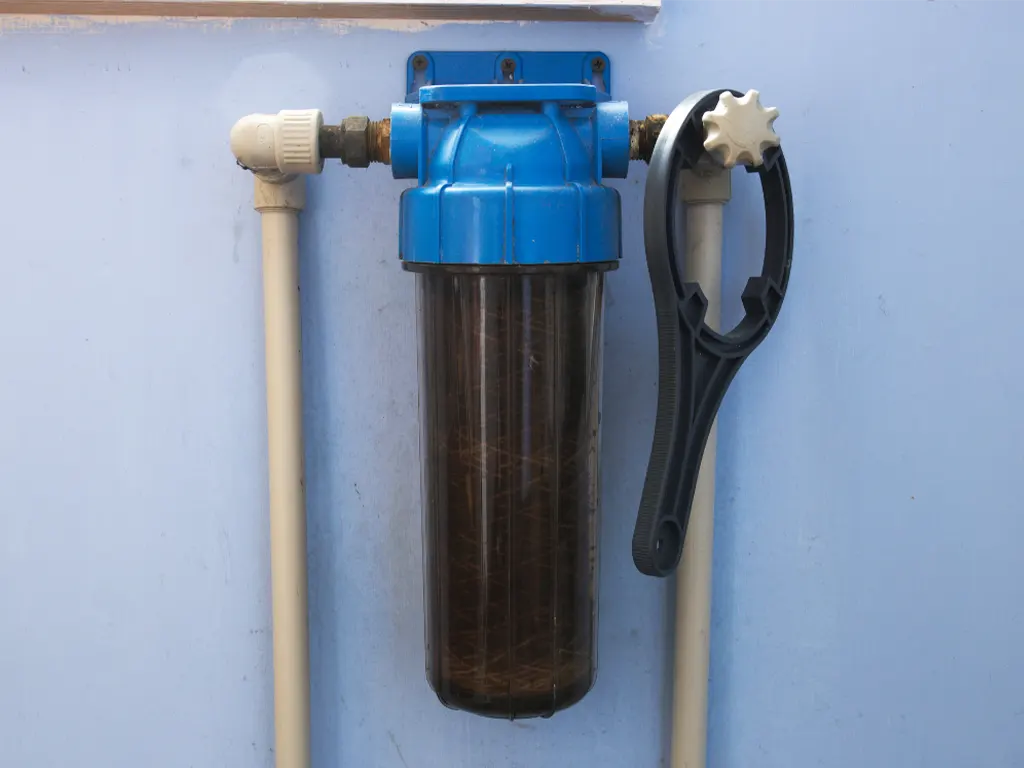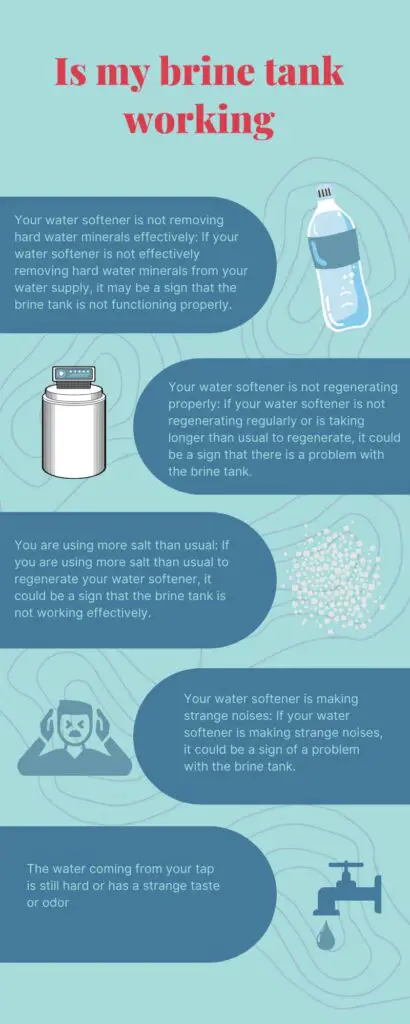Quick Answer
Keep in touch about the below facts to maximize your water softener’s efficiency in the brine tank.
- Selecting the appropriate size of the brine tank
- Using the correct type of salt for the system
- Regularly maintaining the brine tank and water softener
- Properly disposing of the brine solution
The brine tank is used to recharge the resin beads in the water softener, which is what actually removes the hardness from the water.
With no added minerals, the water is helpful to clean your clothes, appliances, car, windowpanes, and dishes without worrying about the damage it can cause.
I have tried several things to improve the efficiency of my brine tank’s water softener, and here I’m sharing them with you. Let’s look at that!
How does a water softener brine tank work?

Everyone loves freshwater with no contamination in it. The water software runs on a process called ion exchange. Special metals are used to move calcium and magnesium from the water. As soon as the hard water enters the tank, it is sent to the resin beads.
These beads are made of plastic material, usually use to filter the water and keep the large particle aside while water moves ahead through the beads.
They are made of polystyrene, which is charged with sodium ions.
On the other hand, the resin beads are anions that have a negative charge. When the water flows, that contains a large amount of calcium and magnesium minerals that have a positive charge.
When two particles with opposite charges meet together, they get attracted to each other. The minerals are combined with the resin beads and stick to them.
As the hard water moves through the resin, the bread capture as many negatively charge mineral ions and separate them from the flowing water.
When the bead seizes the mineral ion, the process also releases the sodium ion into the water.
During the filtration process, all the hardness is empty in the tank, and water becomes lighter and mineral-free.
Finally, the filtered water flows out through the connected pipe, which reaches your home for regular use.
Components of the Brine Tank and Their Roles
Brine Solution
The brine solution is a mixture of water and salt (usually sodium chloride) stored in the brine tank. This concentrated salt solution is the key ingredient used to regenerate the resin bed in the mineral tank.
The water-softener brine, a mixture of water and salt, plays a crucial role in the regeneration of the resin bed.
Brine Valve
The brine valve is a crucial part of the water softener system responsible for controlling the flow of brine into the mineral tank during the regeneration cycle. It ensures the right amount of brine is used for effective resin bed regeneration.
Float Assembly
The brine tank typically includes a float assembly, which functions similarly to a toilet tank float. This assembly helps monitor and control the brine solution’s level in the tank. When the brine solution level drops, the float valve triggers the refill process to ensure sufficient brine is available for the next regeneration cycle.
Brine Well
The brine well is a vertical tube or chamber within the brine tank that houses the brine solution. The float assembly is often connected to the brine well to accurately measure the brine level.
Brine Tank Lid
The brine tank is equipped with a lid or covers to protect the brine solution from contamination and prevent foreign particles from entering the tank.
Different Types of Brine Tanks Available in the Market
Standard Brine Tanks
These are the most common brine tanks used in residential water softeners. They come in various sizes to accommodate different water softener capacities. Standard brine tanks are relatively simple in design and function, making them cost-effective and easy to maintain.
Cabinet-style Brine Tanks
Cabinet-style brine tanks are more aesthetically pleasing and are designed to blend in with home decor. They often feature an outer cabinet or cover that hides the traditional brine tank inside, making them suitable for installation in visible areas of the house.
Safety Brine Tanks
Safety brine tanks are equipped with additional safety features to prevent overflow or leakage of the brine solution. These tanks are particularly useful for areas where the risk of water damage from a potential brine tank malfunction is a concern.
Commercial Brine Tanks: For larger-scale applications, such as in commercial or industrial settings, heavy-duty commercial brine tanks are available. These tanks are designed to handle higher water volumes and have more robust construction to withstand demanding conditions.
Proper Installation of the Brine Tank
Proper installation of the brine tank is essential to ensure its effective operation and longevity in your water softener system. To begin, carefully unpack the brine tank from its packaging and thoroughly inspect it for any visible damages or defects. Any issues should be reported to the manufacturer or retailer immediately to ensure a replacement or repair.
Next, if your brine tank includes a separate brine well, follow the manufacturer’s instructions to insert it into the tank correctly. The brine well plays a crucial role in housing the brine solution and facilitating the control of water levels within the tank.
For tanks equipped with a float assembly, connect it to the designated area inside the tank or to the brine well. The float assembly acts as a water level sensor, ensuring that the tank refills with water as needed during the regeneration process.
Afterwards, position the brine tank on a stable surface, such as a concrete floor or a sturdy platform, ensuring that it sits level and securely. A stable surface is essential to support the weight of the brine tank when it’s filled with water and salt.
Some brine tanks have an overflow line to drain excess water away. Connect this overflow line as per the manufacturer’s instructions to prevent potential overflows, which could cause water damage or reduce the efficiency of the water softener system.
Lastly, add the appropriate type and amount of water softener salt to the brine tank. The specific salt recommendations can be found in the water softener’s manual. Using the right type and quantity of salt ensures optimal performance during the regeneration process, maintaining the effectiveness of the water softener in removing hardness minerals from the water.
By following these steps, you can install your brine tank correctly, allowing it to function efficiently and contribute to the extended lifespan of your water softener system. Regularly inspect and maintain the brine tank to ensure smooth operation and the continual production of soft water for your household needs.
FAQs
How do I know if my brine tank is working?
- Look for signs such as sticky or dry hands after touching the water.
- Observe if your home’s water supply still contains hard water.
- Check if the water tastes salty or has a cloudy appearance.
How do I know if my brine tank is working?

How do I adjust the float level in my water softener brine tank?
- Turn off the power to the water softener.
- Locate the float valve and use a screwdriver to adjust its position.
- Aim to have the water level in the brine tank between 6 and 10 inches from the bottom.
Should there be water in my water softener brine tank?
- Yes, the brine tank should have water to create the brine used for regeneration.
- Different brine tanks have varying capacities, and the required water level can be found in the product specifications.
Why does my water softener brine tank overflow?
- Possible reasons include system failure, damaged valves, or a malfunctioning brine water float.
- When the tank doesn’t drain properly, water can continuously fill the tank, causing it to overflow.
Water softener brine tank not filling up?
- Crystallized salt can block the filling line and prevent water from properly entering the tank.
- To fix this, empty the tank, clean the blockage, and repack the salt properly.
How much water should be in the brine tank after regeneration?
- The water is poured into the tank during the regeneration process. The amount may vary based on the water softener’s capacity.
Water softener brine tank replacement?
- Water softeners generally last 10 to 20 years. Replacement may be necessary if certain parts or the entire system is in poor condition.
How long does a brine tank last?
- The average lifespan of a brine tank is about 12 years, but it may last up to 20 years with proper maintenance and good water quality.
Why won’t my water softener stop draining?
- Draining issues may arise from clogging in the system or low water pressure in the house.
- Clear any blockages to restore proper functioning.
How do you empty a brine tank?
You can manually scoop out the water or use a wet-dry vacuum to remove it from the tank.

